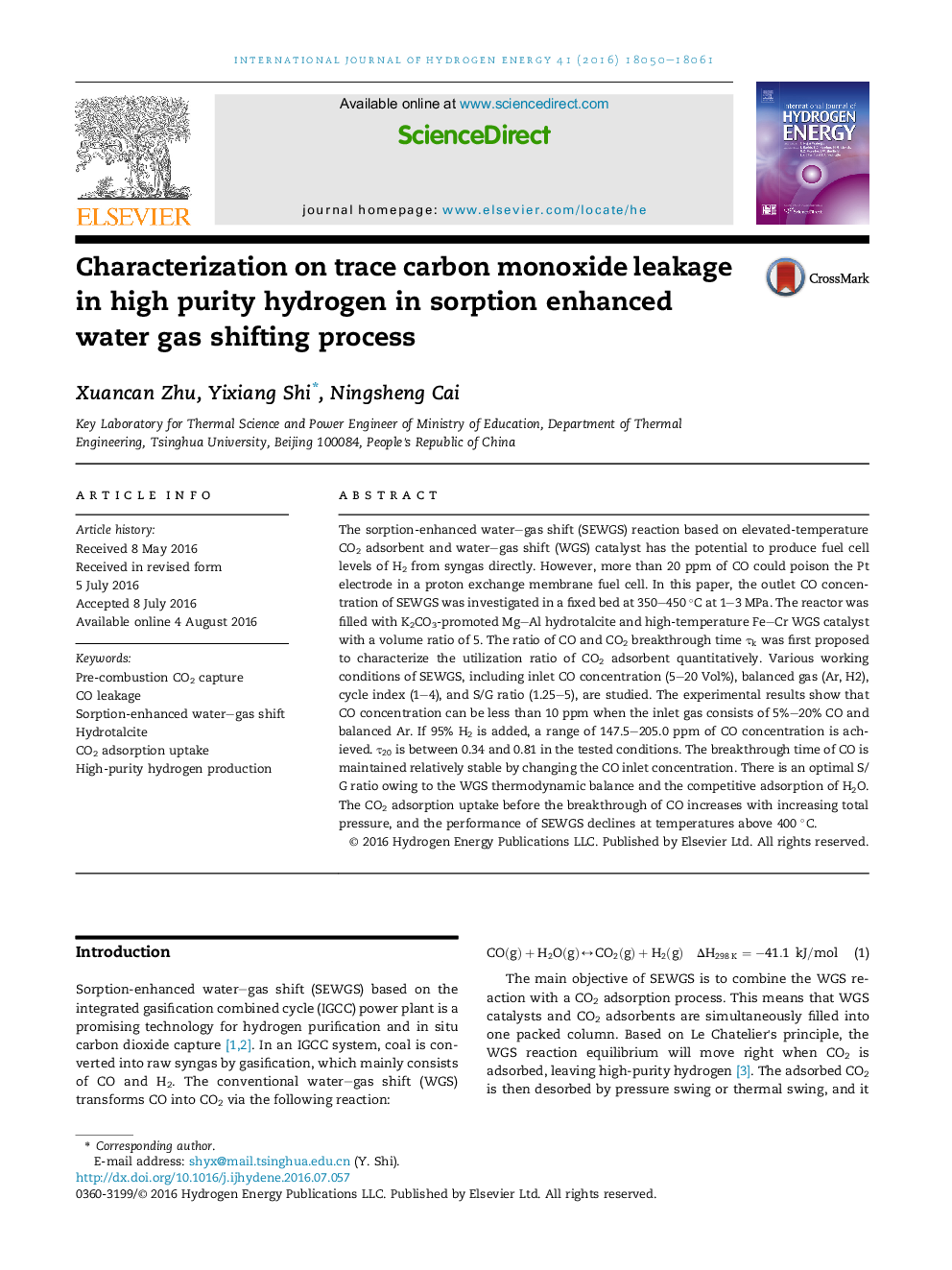| Article ID | Journal | Published Year | Pages | File Type |
|---|---|---|---|---|
| 5147551 | International Journal of Hydrogen Energy | 2016 | 12 Pages |
Abstract
The sorption-enhanced water-gas shift (SEWGS) reaction based on elevated-temperature CO2 adsorbent and water-gas shift (WGS) catalyst has the potential to produce fuel cell levels of H2 from syngas directly. However, more than 20 ppm of CO could poison the Pt electrode in a proton exchange membrane fuel cell. In this paper, the outlet CO concentration of SEWGS was investigated in a fixed bed at 350-450 °C at 1-3 MPa. The reactor was filled with K2CO3-promoted Mg-Al hydrotalcite and high-temperature Fe-Cr WGS catalyst with a volume ratio of 5. The ratio of CO and CO2 breakthrough time Ïk was first proposed to characterize the utilization ratio of CO2 adsorbent quantitatively. Various working conditions of SEWGS, including inlet CO concentration (5-20 Vol%), balanced gas (Ar, H2), cycle index (1-4), and S/G ratio (1.25-5), are studied. The experimental results show that CO concentration can be less than 10 ppm when the inlet gas consists of 5%-20% CO and balanced Ar. If 95% H2 is added, a range of 147.5-205.0 ppm of CO concentration is achieved. Ï20 is between 0.34 and 0.81 in the tested conditions. The breakthrough time of CO is maintained relatively stable by changing the CO inlet concentration. There is an optimal S/G ratio owing to the WGS thermodynamic balance and the competitive adsorption of H2O. The CO2 adsorption uptake before the breakthrough of CO increases with increasing total pressure, and the performance of SEWGS declines at temperatures above 400 °C.
Related Topics
Physical Sciences and Engineering
Chemistry
Electrochemistry
Authors
Xuancan Zhu, Yixiang Shi, Ningsheng Cai,
